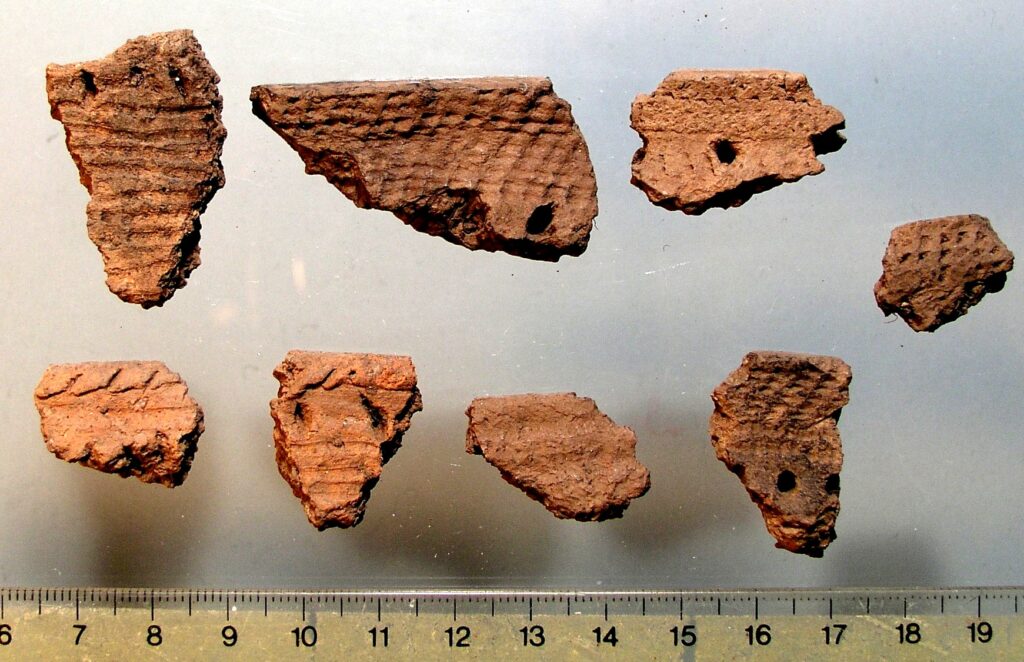
More than a thousand years ago, people living in what is now the Boundary Waters Canoe Area Wilderness made a vessel from clay and stone, and cooked a meal in it. Then, a few years ago, archaeologists found fragments of the pot and were able to expand the story a little.
The pottery fragments have now been found to be 1,600 to 1,750 years old. The finding offers new insights into the people who lived in the region long before European immigration.
“It is important to get accurate dating along with utilization, to demonstrate the sophistication of the people and their land uses here for thousands of years,” said Jaylen Strong, Tribal Historic Preservation Officer for the Bois Forte Band of Chippewa. “Artifacts like this help to improve the knowledge of people who used this land that can often be misrepresented.”
The pottery was identified based on its design and decoration as created by people of the Laurel Cultural Tradition, a group that was widespread in the upper Midwest from 2,100 to 1,000 years ago. By analyzing carbonized food residue stuck to the vessel, a much more precise date was found.
The “absolute dating technique” measures the radioactive isotope Carbon 14. Because the isotope decays at a steady pace over time, the technique can determine a fairly precise date for when the organic material was created.
“The site location and artifacts suggested a long history of ancestral Native American use of the site during the summer months for both fishing and manoomin (wild rice) processing; however, the radiocarbon date gives a really specific point of time to contextualize that use,” said Lee Johnson, Superior National Forest Archaeologist. “We are fairly confident we have sites on the Forest that are as old as 9,000 or 10,000 years ago, but it is really rare for us to get a good radiocarbon date to confirm precise dates of human use.”
Laurel people are believed to be one of the first northern cultures to make pottery. Their pots were made by mixing fine stone grit with the clay to strengthen it during the firing process. It also relieved stress on the pot during heating and cooling while being used for cooking. The pots were also decorated with markings around their rims, while the rest of the pot was left plain. Archaeologists believe Laurel people began making them around 200 to 300 B.C.
“Laurel people were the earliest in this area to adopt mound building and continental trade networks,” said David Mather, the National Register Archaeologist for the Minnesota State Historic Preservation Office. “Out of that large area, the BWCAW has perhaps the best representation and preservation of all that history. It is powerful to connect an artifact — in this case, a meal that was cooked — to a specific point in time.”
The Forest Service’s Northern Research Station helped prepare the samples, which were then analyzed in a lab at the University of California-Davis.
The findings are the latest chapter in efforts to better understand the prehistoric people of the region. It follows on the discovery of a flake of obsidian, prized for its ability to be crafted into sharp edges, at the same site in 2008. That obsidian was later identified as having come from what is now Idaho. The discovery showed how, thousands of years ago, trade networks spanned much of the North American continent. Thunder Bay researchers identified maize (corn) and manoomin (wild rice) residue on some pottery sherds.
More information:
- Ancient Native American Cooking Vessel Found in Superior National Forest Dated to 254 – 403 C.E. – Superior National Forest
- Late Western Shield Culture – Canadian National Museum

